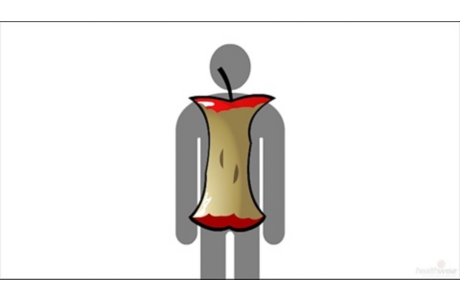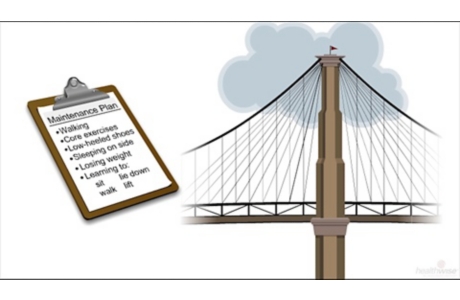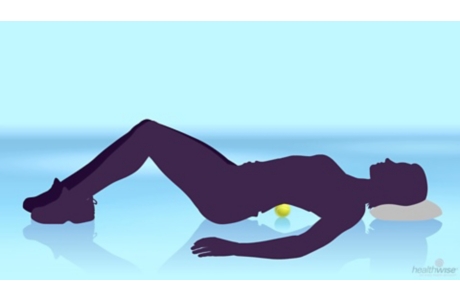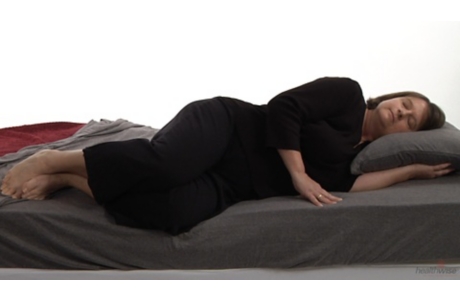Intradiscal Electrothermal Therapy (IDET) for Low Back Pain
Surgery Overview
Intradiscal electrothermal therapy (IDET) is a relatively new, minimally invasive treatment for spinal disc-related chronic low back pain. This type of persistent disc pain is thought to be caused by nerve fibers that have grown from their normal location in the outer layers of the disc, reaching into the disc interior. This is related to the breakdown (degeneration) of the tough outer layers (annulus) of the disc. The pain may also be from injury to the disc, causing the material in the center (nucleus) of the disc to move into the outer layers of the disc. This material from the nucleus is irritating to the outer layers, where the nerves are, and it causes pain.
Discography is typically done before IDET to try to clearly identify the disc problem. After discography, your doctor will decide whether it is likely that your disc problem can be helped by IDET. Before an IDET procedure, you are given a sedative and a local anesthetic. Using “live” X-ray imaging (fluoroscopy), a doctor inserts a hollow needle containing a flexible tube (catheter) and heating element into the spinal disc. The catheter is positioned in a circle in the outer layer (annulus) of the disc and is then slowly heated to about 194°F (90°C). The heat is meant to destroy the nerve fibers and toughen the disc tissue, sealing any small tears. Antibiotics, either given in a vein (intravenous) or injected into the disc, are used to prevent a disc infection.
What To Expect
Pain relief after IDET is not immediate. Pain may increase during the first couple of days. Physical therapy is a necessary part of recovery. During the first month after IDET, plan to walk and do easy stretches as prescribed by your doctor. During the first 2 to 3 months, exercise as directed, and avoid lifting, bending, and long periods of sitting.
People who have had IDET are usually told to wait at least 5 to 6 months before resuming strenuous sports such as skiing, running, or tennis.footnote 1
Why It Is Done
IDET is used to treat a select subgroup of people who have had chronic disc-related low back pain (usually for at least 3 to 6 months) despite nonsurgical treatment. footnote 2, footnote 3IDET is not recommended for people who have severe disc degeneration, spinal stenosis, or spinal instability (such as spondylolisthesis).
How Well It Works
Since its introduction in the 1990s, IDET has been evaluated in several small studies. Larger studies have been hard to do, because most people do not meet the requirements for this procedure. There is no consistent evidence that this treatment works, and most experts do not recommend it.footnote 4
Risks
Although complications are rare, possible risks include:
- Nerve damage.
- Disc damage.
- Disc infection.
Discography may increase the risk of disc problems in the future. footnote 5If your doctor recommends discography, experts recommend getting a second opinion before having the test.
What To Think About
If you are considering IDET, be sure that you are a good candidate for the procedure and that the doctor doing the procedure is well trained and experienced. If you are unsure about whether IDET is right for you, consider getting a second opinion.
Here are some of the criteria your doctor will use to decide whether you might be a good candidate for IDET.footnote 6
|
You may be a candidate for IDET if: |
You are probably not a candidate for IDET if: |
|---|---|
|
|
Your health insurance provider may not cover this procedure.
References
Citations
- Saal JA, Saal JS (2002). Intradiscal electrothermal treatment for chronic discogenic low back pain: Prospective outcome study with a minimum 2-year follow-up. Spine, 27(9): 966–974.
- Freeman BJC, et al. (2005). A randomized, double-blind, controlled trial: Intradiscal electrothermal therapy versus placebo for the treatment of chronic discogenic low back pain. Spine, 20(21): 2369–2377.
- Pauza KJ, et al. (2004). A randomized, placebo-controlled trial of intradiscal electrothermal therapy for the treatment of discogenic low back pain. Spine Journal, 4(1): 27–35.
- Chou R, et al. (2009). Interventional therapies, surgery and interdisciplinary rehabilitation for low back pain: An evidence-based clinical practice guideline from the American Pain Society. Spine, 34(10): 1066–1077.
- Carragee EJ, et al. (2009). Does discography cause accelerated progression of degeneration changes in the lumbar disc: A ten-year matched cohort study. Spine, 34(21): 2338–2345.
- Kloth DS, et al. (2008). Intradiscal electrothermal therapy (IDET) for the treatment of discogenic low back pain: Patient selection and indications for use. Pain Physician, 11(5): 659–668.
Credits
Current as of: June 26, 2019
Author: Healthwise Staff
Medical Review:William H. Blahd, Jr., MD, FACEP – Emergency Medicine & Adam Husney, MD – Family Medicine & Kathleen Romito, MD – Family Medicine & Kenneth J. Koval, MD – Orthopedic Surgery, Orthopedic Trauma
Current as of: June 26, 2019
Author: Healthwise Staff
Medical Review:William H. Blahd, Jr., MD, FACEP – Emergency Medicine & Adam Husney, MD – Family Medicine & Kathleen Romito, MD – Family Medicine & Kenneth J. Koval, MD – Orthopedic Surgery, Orthopedic Trauma
This information does not replace the advice of a doctor. Healthwise, Incorporated, disclaims any warranty or liability for your use of this information. Your use of this information means that you agree to the Terms of Use. Learn how we develop our content.







